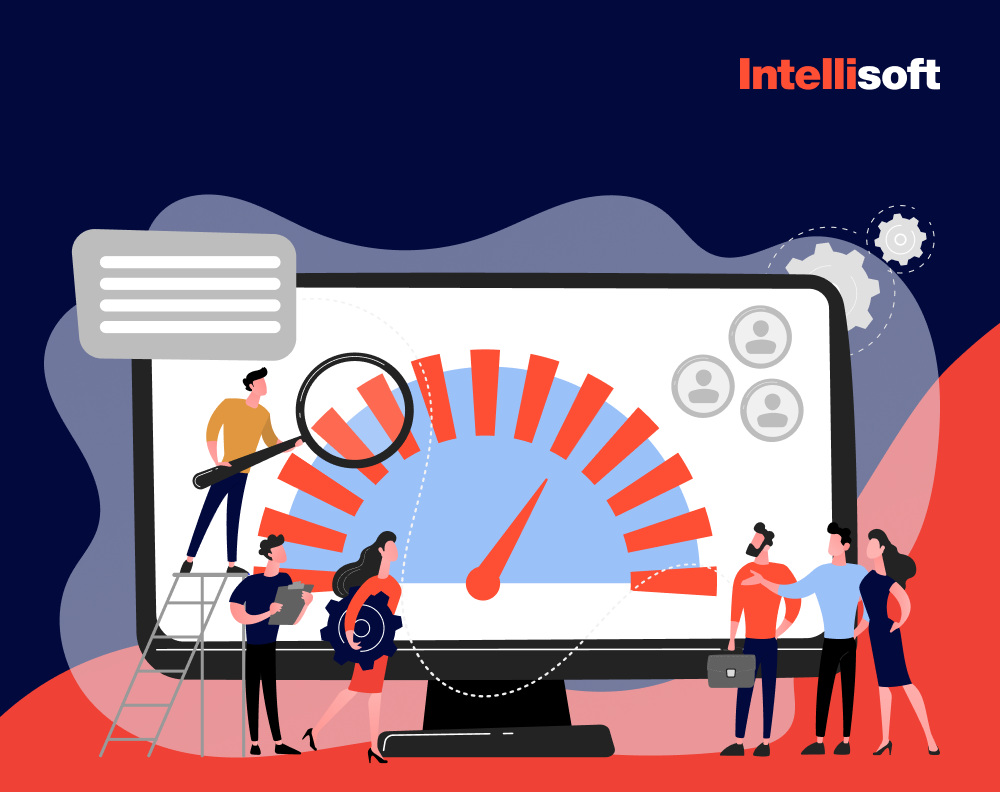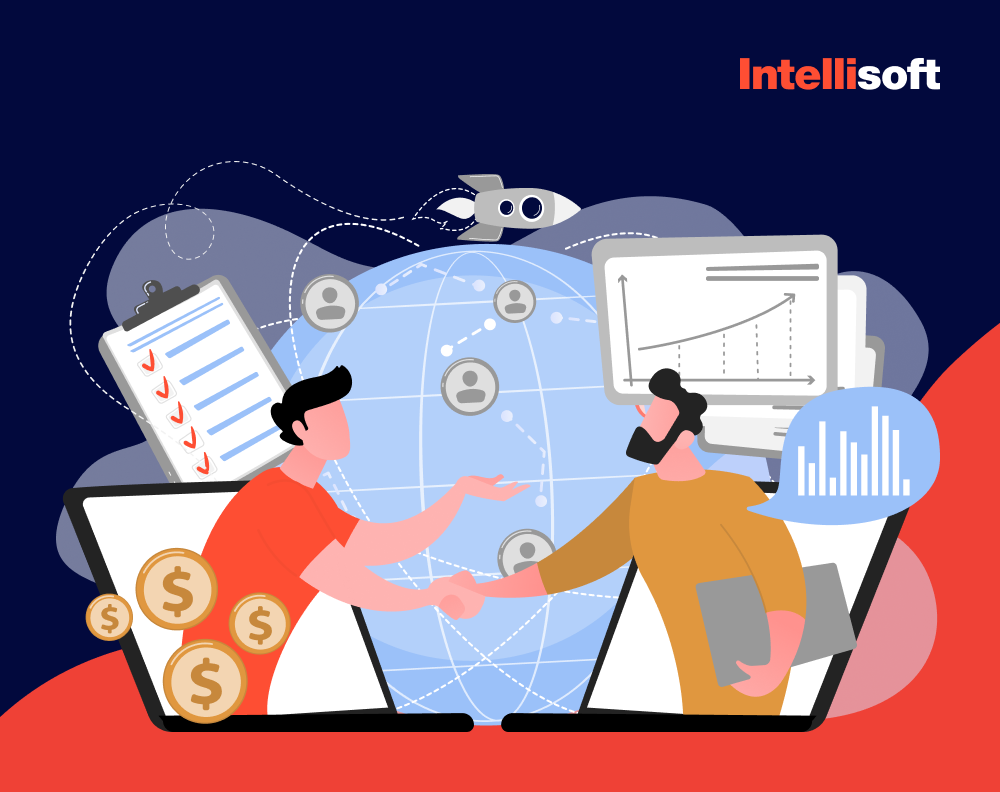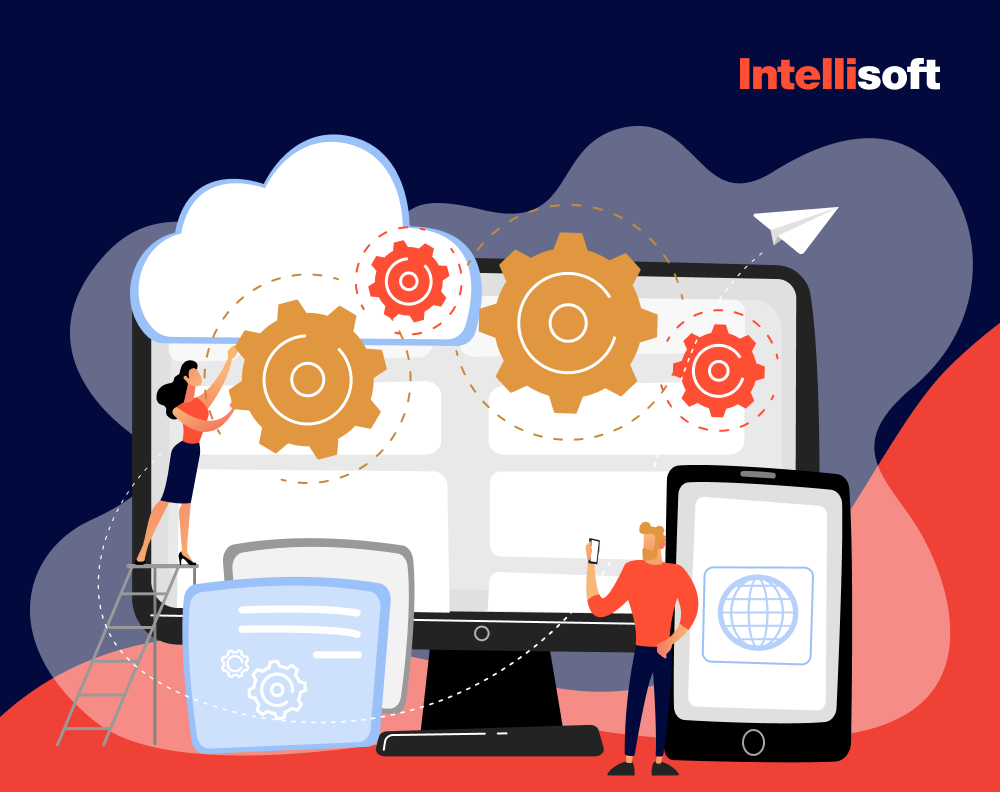Harvard Business Review estimates that over 66% of businesses fail to give investors their money back. What factors account for the high failure rate?
To get their solutions up and running as fast as possible, businesses frequently go right into product development without getting proof of the business idea’s feasibility. It’s a hazardous approach that might go wrong.
Proof of concept (PoC) is required before investing into project development. It is a strategy that helps businesses make educated decisions about creating new products—the chance of crafting a solution people like using increases if developers perform this preliminary analysis.
IntelliSoft has been in software development for decades, so that we go through every stage of project development with our customers, from the idea to the release of a complete product. We know how to develop a proof of concept for various areas such as fintech, logistics, the Internet of Things, healthcare, etc.
Table of Contents
What Is a Proof of Concept in Software Development?
What is PoC? Proof-of-concept is a general term for providing logical proof that a concept works. Theoretically, a good Future Reality Tree (FRT) can provide such evidence, but it may not be good enough to eliminate all worries.
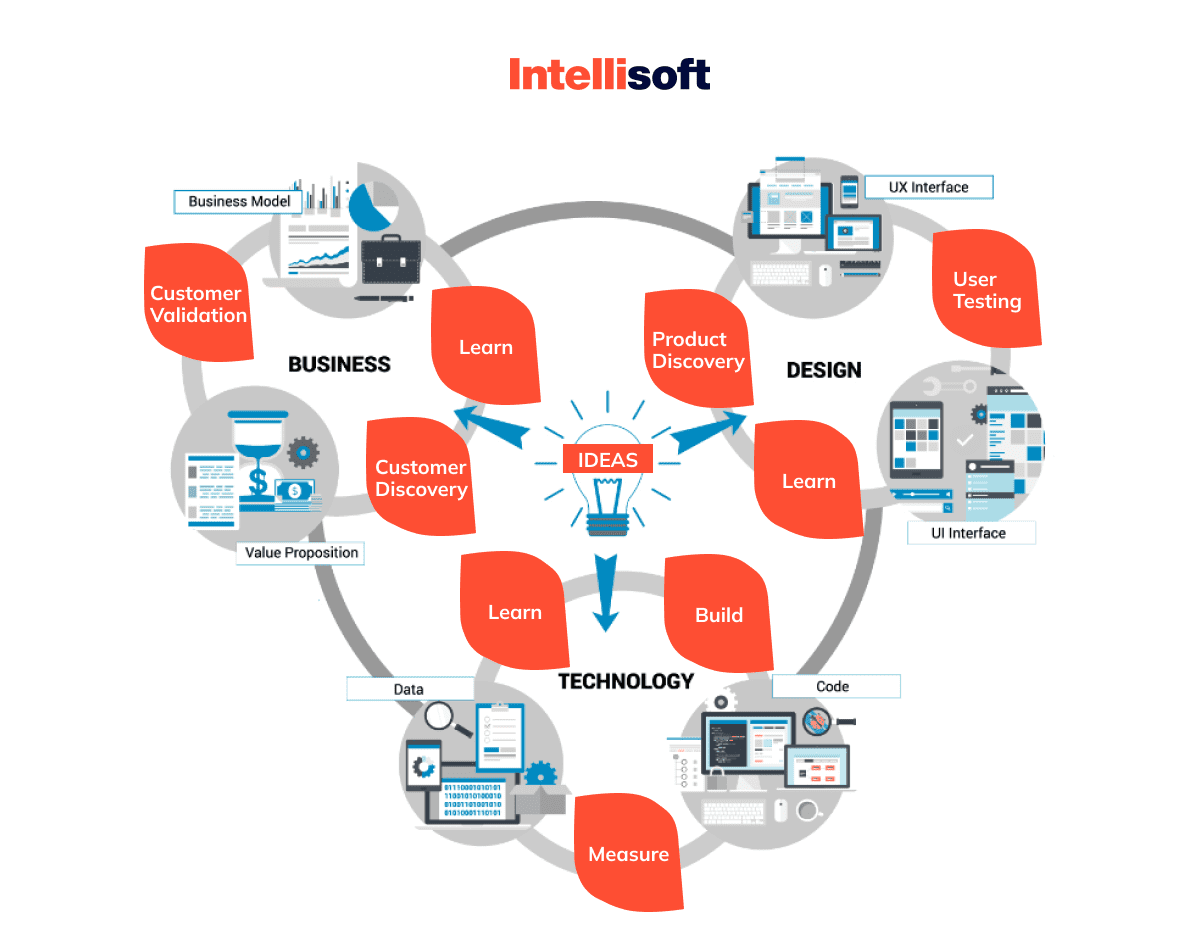
PoC meaning sounds this way: the objective is to learn whether or not your software development proposal is feasible and, if so, what technologies will be most useful to make the product successful. In software development, the key benefits of proof of concept are:
- Helps you save time and money by identifying which concepts don’t work.
- Assists you with gaining a competitive advantage because proof of concept assures you that you can implement the idea.
- Allows you to choose the right technology from the beginning.
Proof of Concept’s Worth
The proof of concept is the initial stage at which a business may determine whether or not an idea is viable. Prior to devoting a substantial amount of time and resources to trying out irrational conjecture, this strategy enables businesses to assess the feasibility of new ideas.
The development of a proof of concept (POC) can assist a product owner in identifying possible problems, both technically and logistically, that could impede success.
A proof of concept in software development would demonstrate technical feasibility. POCs can prove startup financial feasibility. An organization wouldn’t waste time or money on a POC that doesn’t satisfy quality criteria.
When You May Require a Proof of Concept
Testing new technology thoroughly is essential to guarantee it won’t disrupt your current operations. The proof of concept lets you determine if it works correctly and is compatible with your current setup. Moreover, it will alert you to any problems that need fixing before the project release.
Suppose you’re already adding new features to a product, service, or technology. A PoC is needed to see if the proposed new features are possible, if they work, and might be worth it. It’s about lowering risk and ensuring you avoid investing on things that won’t work out:
- Launching a start-up
Before spending a ton of time and money developing anything, it’s wise to conduct a Proof of Concept to see if it’s technically feasible and if people would find it valuable. - Enhancing a current product, service, or technology by introducing new functions
A Proof of Concept must be conducted to ensure that the suggested new features are both practical and valuable. The goal is to minimize losses and avoid pouring money into projects that are certain to fail. - Introducing innovative technologies
The PoC determines compatibility and performance. It must function with your present systems and operations without causing issues. It will also alert you to any difficulties before you deploy it.
PoC in Software Development VS MVP VS Prototype
People often confuse proof of concept in software PoC development and minimum viable product (MVP). Let’s see the difference to clarify things once and for all.
- PoC
Proof of concept (POC) is data acquired from a pilot project that is carried out to show the viability of a project plan, business strategy, or product proposal. Clinical trials, for instance, are performed to acquire proof of concept for a finished product in the drug development industry. Nevertheless, a proof of concept accomplishes more than that. - MVP
The term “minimum viable product” (MVP) comes from the book “The Lean Startup,” which places an emphasis on the role that learning plays in the creation of new products. The term “minimum viable product,” or “MVP,” was coined by Eric Ries, who described it as “that version of a new product that allows a team to collect the most amount of verified learning about consumers with the least amount of work.” - Prototype
You can evaluate the “form” of your concept with the help of a mobile app prototype (e.g., look, flow, or user interaction).
Prototyping helps you bridge your concept and knowledge gaps and uncover all demands and specifications. User testing and feedback can help you develop your product concept using this time- and cost-saving option.
Showcase your product design via prototyping. It also illustrates the system’s complicated algorithms and operations.
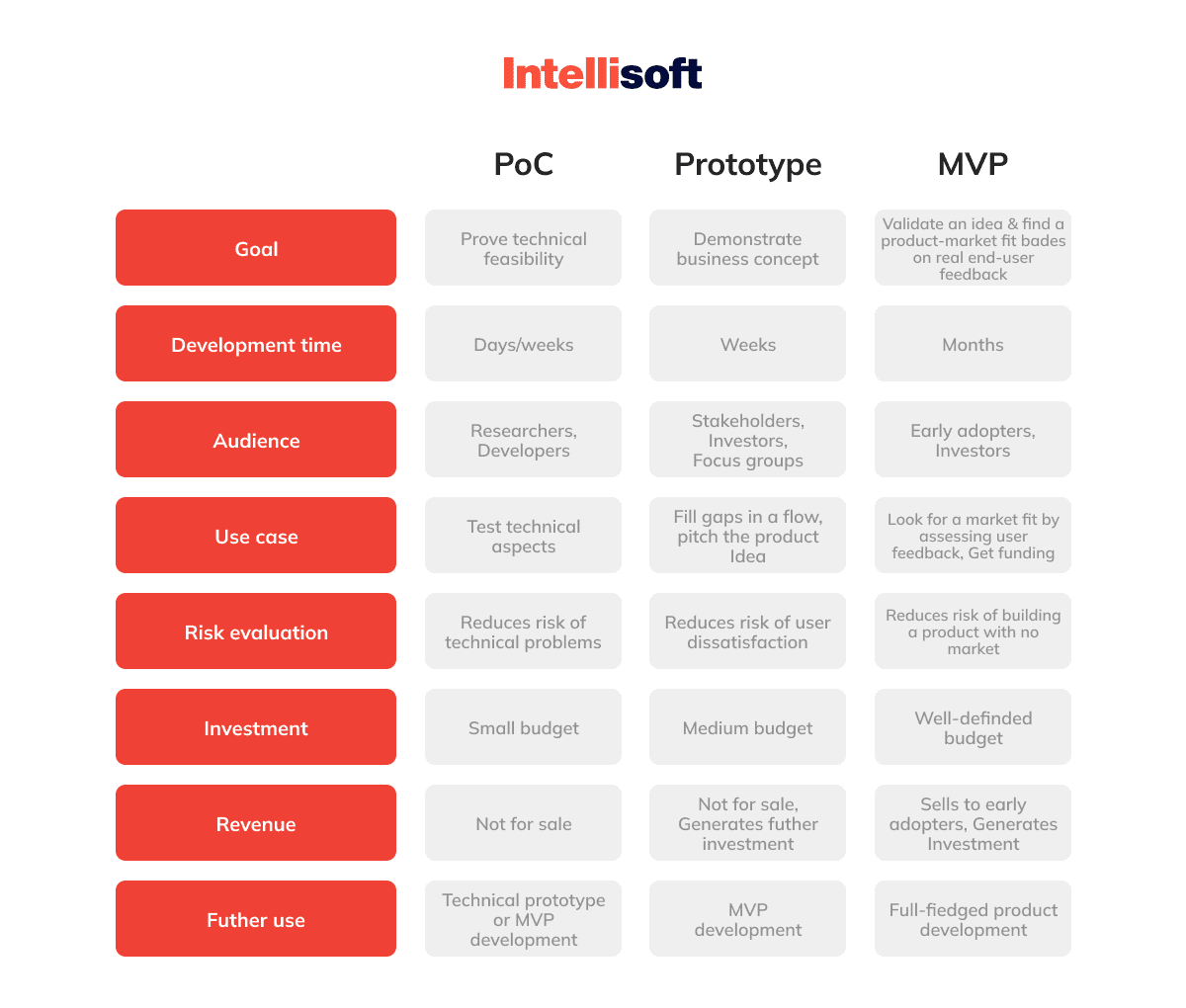
The Benefits of Creating a PoC in Software Development
- Possessing a reason-to-believe
It takes more than excitement to persuade potential investors that your idea is credible and worth their money. The proof of concept details the rationale and implementation of your brilliant idea. Such evidence may convince even the most doubtful investors and provide you additional negotiation power with other parties. - Realizing product restrictions
In the realm of software development, the creation of a proof of concept will be of great assistance to owners in gaining knowledge of the limitations, benefits, and downsides of their product concept. Throughout the procedure, stakeholders can acquire knowledge regarding the many options and decide the most suitable way to build software. - Former verification of market requirements
The first step in developing a Proof of Concept is to define the issues and challenges to address with the software. The objective is to ensure the product is grounded in reality and value to its intended audience. You’ll know if you’re on the right track thanks to the testing phase. - Planning a budget
In software development, making a proof of concept will help stakeholders understand the limits, benefits, and problems of their product idea. During the process, they will learn about the many options and be able to choose the best way to make software. - Evaluating tech feasibility
A proof of concept serves the objective of determining whether the software idea is technically possible. The development team evaluates what is feasible and impractical and chooses the best technical path for product development to include in a PoC project. - Accelerating the release
You create a strategy for implementing your novel idea by producing a proof of concept. The procedure lets you check that you have chosen the appropriate workflow and make any required adjustments. By picking the proper path early on, you may learn about the dangers and allow yourself to get ready to reduce them. You can avoid surprises at later stages of the process.
How to Develop a Proof of Concept?
IntelliSoft has gathered the most essential steps of PoC development below so that you can get a clear idea of the scope of the work.
Step 1: Prove the Demand
Ensure your POC is project-related. If your project is unrelated, a proof of concept is pointless. If a POC helps you meet project goals, it’s relevant. If not, don’t use it.
You should know precisely what problems your users are having before you start designing the program. Talk to a group cross-section rather than making assumptions or presuming you understand the issues.
It’s not necessary to interview hundreds of people at this stage; just enough that you can identify recurring themes in people’s worries. Ask about each problem’s repercussions when you interview potential consumers and stakeholders.
Remember that you are not writing a POC for developers but for investors. The primary purpose of the proof of concept is to assess the feasibility and describe the technical details. But the document must be understandable to someone who knows nothing about development. Describe the technical information without unnecessary details. Consider the example of a neural network composer for background music.
Step 2: Detect Pain Points and Obtain Feedback
You must consider potential solutions to each problem highlighted in the previous step. More than one solution may exist for each problem. You need it to:
- Identify the problem
- Show that your product will solve it
One way to collect data is through in-depth interviews with potential customers. For our example, you could gather a focus group of people who listen to background music while working or studying and ask them questions:

Interview up to ten people individually. As this is a qualitative study, a large data set is unnecessary. Yet, confounders, or variables that bias data and lead to erroneous conclusions, may cause you to falter in selecting respondents.
After completing your brainstorming session, you will analyze each potential solution to assess how it fares in cost, competition, timeframe, technological obstacles, and so on. When you’ve finished going through this process, you should have a better notion of which solutions to include in the product that you’re creating.
When you have compiled this list of options, you should revisit the users and stakeholders first interviewed to get information regarding their reactions and answers to the solutions offered.
Step 3: Prototype Your Solution and Examine
The next stage is to build a prototype that incorporates your suggestions into an essential product that you can test with the people you previously interviewed. This prototype’s UI/UX and feature set should be as anticipated.
After finishing the prototype, test it with the interviewers to get further input. Take notes as they use the product to monitor the UI’s user-friendly and determine whether you missed any crucial features.
You will determine whether or not your idea is ready to be put into production and whether or not it was successful. Completing this procedure should result in a user-friendly, simple, and helpful product since this was the intended outcome. You will want to ensure developers are familiar with its operation to get work done swiftly and efficiently without stumbling into any problems.
Step 4: Develop a Minimum Viable Product
The Minimum Viable Product (MVP) is the earliest version of a product with only the necessary features, enough to deliver the underlying values to the audience and test them on the first users.
The key to an MVP is that the company produces an actual product, which it then delivers to the marketplace. This product can be a one-page website. Developers observe the behavior of people using the service for the first time. Based on the information gained from the experiment, the team continues, adjusts, or cancels work on the product.
Step 5: Craft a Roadmap
Create a road map using all the information you’ve acquired in the preceding phases. This road map should explain what you’ve learned and give an overview of the recommended step-by-step procedure for constructing the product. Your project manager will be grateful to you for doing this. Consider this route as a collection of architectural plans that will be used to construct a structure. Everyone involved in developing the product will remain on the same page thanks to this roadmap as a guide, and they will have a crystal clear idea of the ultimate objective.
Tools to Use When Creating Your PoC
Project managers’ planning for the typical software development process is quite similar to the proof of concept development.
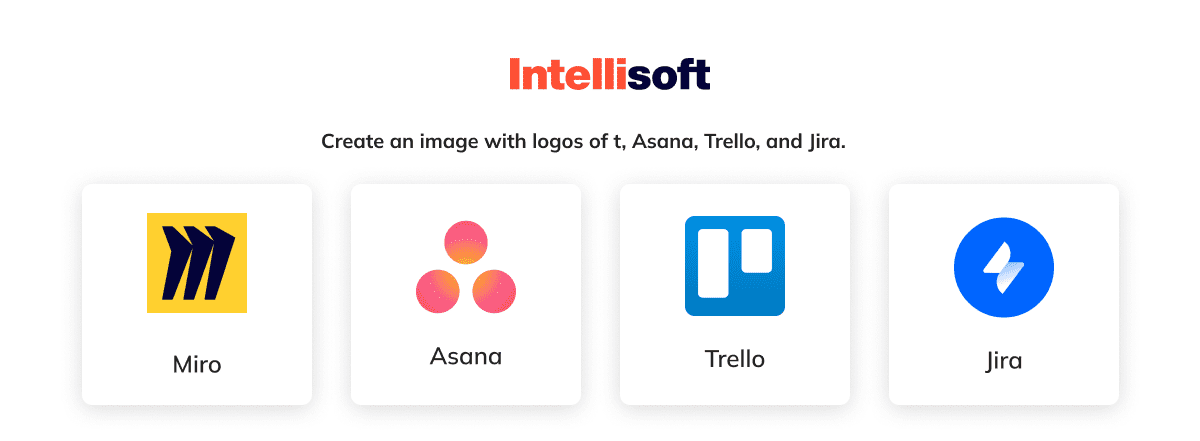
Below we listed the most popular task managers. Pick the one that most appeals to you:
- Miro. A fantastic whiteboarding tool, Miro is fundamentally simple to use and navigate. Additionally, exploring the tool is enjoyable. When working with folks who aren’t from design teams, it’s excellent because it’s really welcoming in the sense that it doesn’t frighten new users (as platforms like Adobe or Figma may). Miro offers a free and premium plan starting at $10 per user per month (or $8 per user per month for annual billing).
- Asana. Asana is a solid, user-friendly project management application that will satisfy the requirements of the majority of users. While not quite as potent as some competitors, the software’s user interface is a major selling point for novices. Read this comprehensive Asana review to learn more. Asana Premium costs $10.99 per user per month when billed annually and $13.49 per user per month.
- Trello. Trello is a kanban tool that enables users to create customized boards for task and process management1. It is a tool for managing small projects and group assignments for both private and professional usage. Even for novices and small teams, it is simple to use and set up. It costs just $5 per month or $45 per year.
- Jira. Jira is a project management application designed for agile software development teams. Numerous tools aid in keeping tabs on various projects, facilitating teamwork, and finding, monitoring, and documenting defects. Jira’s main cloud software costs $7.75 per user, per month for the Standard plan and $15.25 per year.
Creating a test application is only one component of a proof of concept. The documentation of software is also quite crucial in this regard. Thus, you will need to decide on the PoC tools to deal with it.
You may accomplish it with the help of the following PoC business tools:
You can use all of them at no charge.
Steps After Creating a PoC
Once you are ready with your proof of concept, it is time to get closer to the last stage – an app creation.
Step 1. Demonstrate Your PoC to Stakeholders
First, you should present your proof of concept to the people who make decisions for your project. This person might be the project’s sponsor, the product’s owner, or other vital stakeholders. They have to examine what you’ve produced before deciding whether or not to move on with the project.
Step 2. Get Feedback on Your PoC
After showing stakeholders your proof of concept, obtain feedback. These comments will enhance the PoC and increase stakeholder approval of the project. Understand your users’ needs to design well. Interviewing or polling previous users is the most distinctive approach to finding out what works and what doesn’t so that skilled designers can fix it.
Step 3. Respond to Feedback
In light of your feedback, modify and improve the proof of concept (PoC) you have created. This step could be introducing new features, addressing issues, or making other adjustments. Once you’ve implemented all of these changes, display the latest version.
Step 4. Work on the Actual Product
When you have received consent from the relevant parties, it is time to develop the real product. To do this, it’s necessary to create the product’s features and functionality, which must also be tested and deployed.

To demonstrate you what PoC might look like and what goals to achieve, we have gathered some examples below.
PoC Software Development Examples
Imagine your company has a cost item that can be reduced by implementing new technology. Everyone knows that cutting costs is the right thing for business, but there’s a question of whether developing new software can justify those savings. It makes sense to look at the software development concept.
Or another example: you work for an insurance company, and it would be helpful to save the time and effort spent on each auto insurance review. You could integrate an artificial intelligence-based PO to implement this optimization. A proof of concept in software development can design and plan this step and show its feasibility.
If proof of concept shows that the idea is feasible, you can proceed to prototype, then MVP, or after that, start developing an integrated product.
Now, let’s consider a particular example. Co-hosting is an option on Airbnb. Someone leases out a home through their website, while another party is responsible for the day-to-day operations of the rental. Developers carry out these services following a proof-of-concept test conducted by the corporation in Tokyo. The company’s staff paired up apartment owners and roommates by hand.
This proof-of-concept is excellent for creating the algorithms for the co-hosting functionality. The project was an in-depth simulation of what would occur on the app later, replete with human involvement to make adjustments as needed.
What’s Next? Developing PoC with IntelliSoft
We create solid proofs of concept. Our best result is a seamless product launch. How do we do that? With research and documentation, software development planning is more straightforward. We focus on product development early on. PoC is one of the phases.
Concept validation is vital for working on unique solutions – but it takes a long time. And in the innovation market, time is critical – by the time the MVP is released, the product idea may need to be updated. To reduce time to market, you can outsource development – and IntelliSoft can help you with that.
You may rely on us to help you create a proof of concept if you also want to enjoy the rewards. The team at IntelliSoft has a wealth of experience in building projects from the ground up and can lend a hand to you in verifying your concept.
Related readings:
- Who Does What? Understanding Roles in a Software Development Startup
- Innovation Roadmap: When to Use a Proof of Concept or Prototype
- 11 Software Developer Soft Skills Every Programmer Needs to Succeed
- 12 Benefits of Outsourcing IT Support Services for Businesses
- Story Point to Hours: Which Estimation Approach to Choose?


